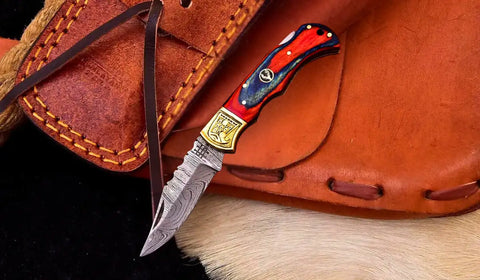Mastering Top Utility Knife Uses: Essential Techniques for Every Home Cook
Understanding the utility knife uses is crucial for every home cook. A utility knife is an incredibly versatile tool that can simplify many tasks in the kitchen. This article will explore various uses of the utility knife, the techniques to master it, and how it fits into the broader category of culinary knives, making cooking easier and more enjoyable.
The Versatility of Utility Knives
Utility knives occupy a unique position in the knife spectrum, falling between a chef’s knife and a paring knife. Their design makes them suitable for various tasks, from cutting vegetables to slicing meats. This capability is primarily attributed to their blade length and shape.
What is a Utility Knife Used For?
A utility knife, typically ranging from 4 to 7 inches in length, is adept at handling both small and medium-sized cutting tasks. It’s not as heavy-duty as a chef's knife but more substantial than a paring knife, making it ideal for tasks such as:
- Slicing fruits and vegetables: The sharp blade makes quick work of tomatoes, onions, and other produce.
- Trimming meat: Great for smaller cuts or when you need to make precise incisions.
- Cutting herbs: It allows for delicate and controlled chopping, especially for items that are small and prone to bruise when handled with larger knives.
Common Uses in the Kitchen
The utility knife is a go-to for many tasks in the kitchen. For example, use it to quarter tomatoes, slice through avocados, or even cut pieces of cheese. Its ergonomic design allows for easy handling, making it a favorite among cooks of all skill levels. Many cooks find they reach for their utility knife just as often as their chef's knife.
Mastering Cutting Techniques
Emphasizing practical knife skills can significantly improve your efficiency and safety in the kitchen. Here are some techniques specifically suited for utility knife applications.
1. The Rock Chop Technique
This technique involves a rocking motion, where the tip of the knife remains on the cutting surface while the handle moves up and down. It’s ideal for chopping herbs or vegetables quickly without much effort. This method not only speeds up the preparation time but also maintains the integrity of your ingredients.
2. Slicing vs. Chopping
While slicing is generally a smooth, forward motion, chopping utilizes an up-and-down motion. The utility knife excels at both. For instance, when slicing tomatoes for a salad, using a gentle slicing motion keeps the fruit intact, while chopping diced onions involves a more vigorous technique to achieve uniform pieces.
3. The Claw Grip
When cutting with a utility knife, adopting the claw grip can help protect your fingers. This grip involves curling your fingers under while keeping your knuckles against the item being cut. It's crucial for preventing accidents while ensuring control over the knife's movements.
Choosing the Right Utility Knife
Not all utility knives are created equal. Understanding the differences in materials, blade design, and handle comfort can make a substantial difference in your cooking experience.
Material Matters
Utility knives come in various blade materials, including stainless steel, carbon steel, and ceramic. Stainless steel tends to be the most popular due to its combination of durability and sharpness. In contrast, carbon steel remains sharper for longer but may require more maintenance to avoid rust.
Handle Considerations
Equally important is the handle design. Look for one that feels comfortable in your hand and provides a good grip. Knives with ergonomic handles reduce the risk of slips and make prolonged use less fatiguing.
Maintenance and Care
To keep your utility knife in top condition, proper care, and regular maintenance are essential. A well-cared knife can perform a variety of tasks easily and effectively.
Sharpening Techniques
Sharpen your knife regularly to maintain its cutting efficiency. Using a whetstone is one of the best methods as it helps you achieve a fine edge. Aim for a sharpening angle between 15 to 20 degrees for optimal results.
Storage Solutions
Proper storage can also prolong the life of your knife. Consider using a knife block or magnetic strip to keep your utility knife safe and within reach. Avoid tossing it in a drawer where it can become dull or damaged.
Conclusion: Elevate Your Cooking With a Utility Knife
The utility knife is an essential tool in any kitchen arsenal. Understanding its uses and mastering various cutting techniques can elevate your culinary skills and make everyday cooking tasks more manageable. Whether you’re slicing, dicing, or mincing, a utility knife offers the versatility and efficiency needed for successful food preparation. Remember to choose the right knife for your needs, maintain it properly, and incorporate effective cutting techniques into your routine.
FAQ
1. What are the typical uses for a utility knife?
A utility knife is versatile and used for a variety of tasks, including slicing fruits and vegetables, trimming meats, and cutting herbs.
2. Can a utility knife replace a chef's knife?
While a utility knife can handle many tasks, it is generally smaller and may not perform as well in heavy-duty scenarios. It’s best to use both knives for different tasks.
3. How often should I sharpen my utility knife?
Sharpen your knife regularly, ideally after every use or when it begins to feel dull. This will ensure optimal performance and safety.
4. What materials are best for utility knife blades?
Stainless steel is often recommended for its balance of sharpness and durability. Carbon steel offers superior sharpness but requires more care.
5. How should I store my utility knife?
Store your utility knife in a knife block or on a magnetic strip to protect the blade from damage and maintain its sharpness.


